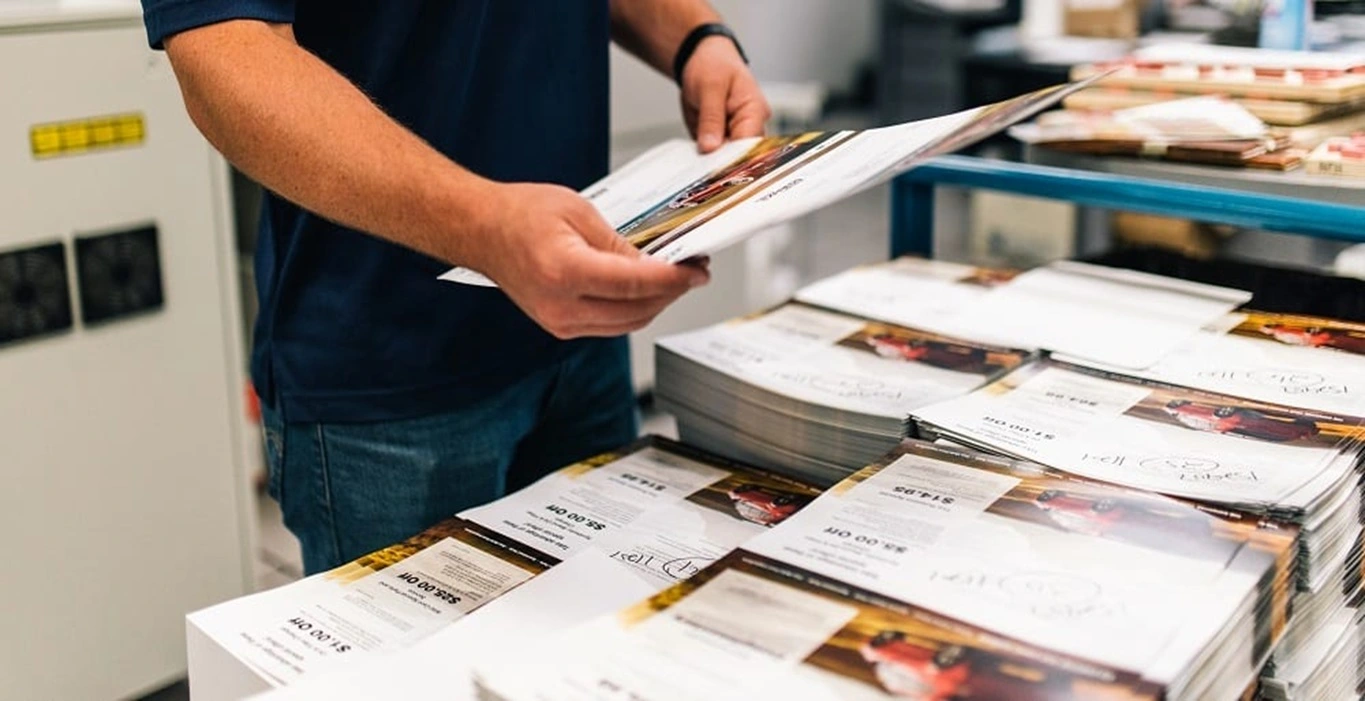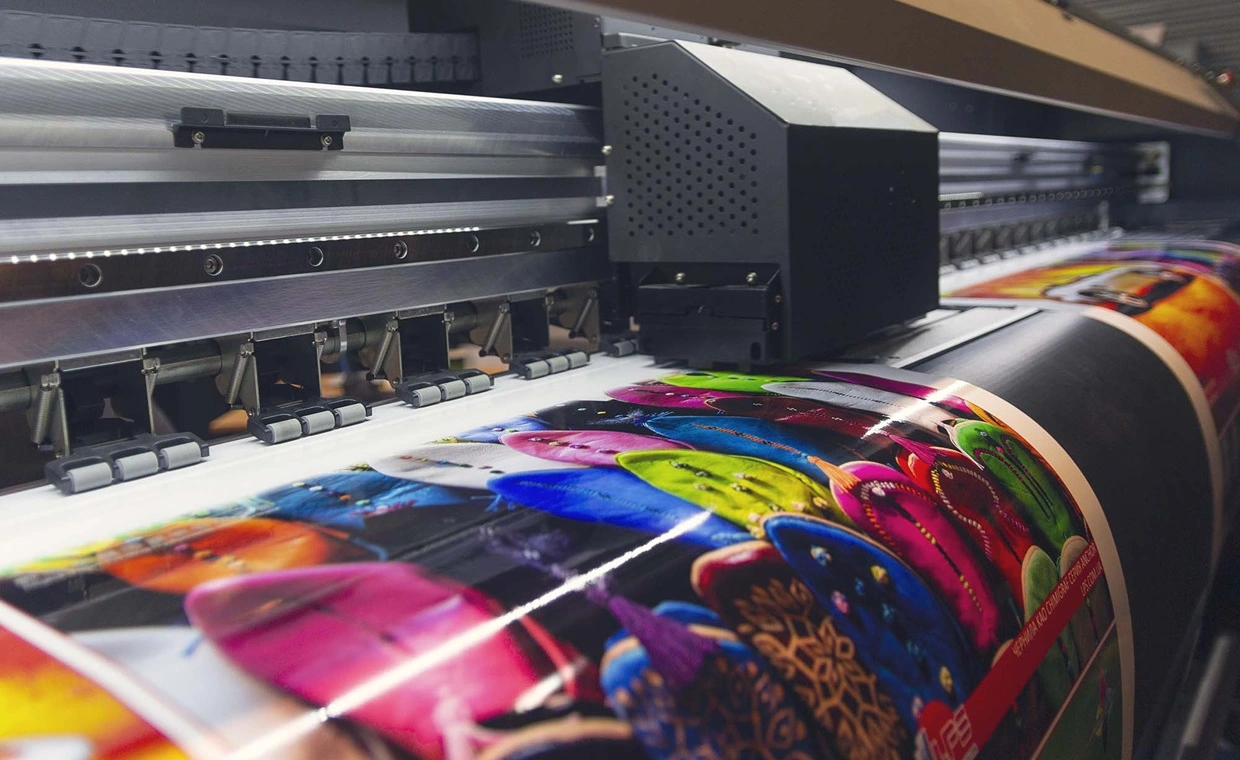The Ultimate Guide to Variable Data Printing
Welcome to the comprehensive world of Variable Data Printing, a dynamic and highly effective printing technique that stands out in today’s digital age. Unlike traditional printing, which reproduces the same content on each printed piece, Variable Data Printing allows each piece to be personalized. This capability is transforming how businesses communicate with their audiences, making interactions more personalized and results more impactful.

What is Variable Data Printing?
Variable Data Printing is a form of digital printing that includes on-the-fly data changes such as text, graphics, and images within a single print run. This means every printed piece can be tailored to the individual recipient. From addressing a customer by name to changing an image to match consumer preferences, variable data printing offers a unique one-to-one marketing approach.
Here’s a list of what types of variable data can be included in Variable Data Printing:
- Names and Addresses: Personalizing each piece with the recipient’s full name and address.
- Personalized Salutations: Custom greetings or messages, such as “Dear [First Name],” to increase personal connection.
- Text Changes: Different text messages tailored to the recipient’s preferences, previous interactions, or demographic data.
- Images: Swapping images based on the recipient’s past behavior, interests, or demographic profile.
- Logos and Locations: Adjusting logos or including location-specific information based on the recipient’s nearest store or office.
- Taglines and Colors: Changing taglines and the color schemes on printed materials to align with seasonal campaigns or regional preferences.
- Special Offers and Promotions: Offering discounts or special promotions that are relevant to the individual’s previous purchases or observed preferences.
- Purchase History: Reflecting aspects of the recipient’s purchase history in the marketing message to enhance relevance and encourage repeat business.
- Graphics: Changing graphics to match the theme or interests of different customer segments.
- Barcodes and QR Codes: Unique barcodes or QR codes for each printed item, useful for tracking responses or providing personalized offers.
- Dates: Specific dates, like appointment reminders, event dates, or expiry dates of an offer.
- Links: Personalized URLs (PURLs) that lead to a webpage customized for the individual.
- Coupons: Personalized offers or discount codes based on customer purchase history or loyalty.
- Maps: Custom maps showing locations nearest to the recipient, such as stores or event venues.
- Language: Text in the language preferred by the recipient, enhancing readability and engagement.
- Sequential Numbering: Unique serial numbers for items such as tickets or vouchers.
Each of these elements can be individually tailored for every print piece in a single run, allowing for highly personalized and effective communication with each recipient.

How Variable Data Printing Works
The process begins with a standard template that serves as the base of your document. Key variable elements like names, addresses, or unique codes are then inserted into this template using specialized variable data printing software. When combined with a customer database, these elements are automatically updated for each print piece, making each one unique.
Here’s how you could lay this out in a tabular format for a clearer, visual representation:
|
Step
|
Description
|
|---|---|
|
Start with a Template
|
A pre-designed template with placeholders for variable data such as names, addresses, images.
|
|
Data Collection
|
Collect data from CRM systems, surveys, and databases.
|
|
Data Integration
|
Integrate data with VDP software, matching data fields to template placeholders.
|
|
Customization Process
|
Software inserts specific data into placeholders for each print piece.
|
|
Printing
|
Customized templates are printed using digital printing technology.
|
|
Distribution
|
Printed materials are distributed to recipients.
|
PRO TIP: When setting up your template for a variable data printing project, ensure that the layout is flexible enough to accommodate varying lengths of text and different image sizes without disrupting the overall design aesthetics.
Types of Data Used in Variable Data Printing
In variable data printing, the data can vary from basic text changes to complex graphic swaps. Here are some typical data types used:
- Textual Changes: Names, addresses, personalized messages.
- Imagery: Different images based on customer interests or past behavior.
- Barcodes and QR Codes: Unique codes for tracking customer engagement or providing personalized offers.
Spectra‘s software and printing technology processes direct mail listings that include names, addresses, and other personal details, customizing each piece of mail for the recipient. The technology allows for personalized messages to be tailored to each individual based on their unique information.
Examples of Variable Data Printing
Variable Data Printing is highly versatile and can be used across various types of print media for tailored marketing and communication. Here are some practical examples of how variable data printing is applied:
1. Personalized Direct Mail
- Use Case: A retail company sends out postcards to customers with their names, personalized coupons based on their recent purchases, and directions to the nearest store using a custom map.
- Benefit: Increases the likelihood of visits and purchases due to personalized incentives and convenience.
2. Customized Billing Statements
- Use Case: Utility companies print monthly billing statements where each statement includes the customer’s name, usage details specific to their account, and personalized messages about saving energy based on their consumption patterns.
- Benefit: Enhances customer understanding and engagement by providing relevant information and tips.
3. Event Tickets
- Use Case: For a concert or event, each ticket is printed with the attendee’s name, seat number, and a QR code that links to a personal schedule or venue map.
- Benefit: Improves the event experience and simplifies venue navigation, making it more personal and organized.
4. Educational Material Customization
- Use Case: Educational books or materials that are customized with the student’s name, course-specific information, and QR codes that link to additional online resources or assignments.
- Benefit: Increases student engagement and provides a more immersive learning experience.
5. Targeted Marketing Brochures
- Use Case: A travel agency creates brochures with personalized travel recommendations based on the customer’s previous bookings, preferred destinations, and special promotions for suggested future trips.
- Benefit: Encourages repeat business by appealing directly to the customer’s known preferences and past behavior.
6. Loyalty Cards
- Use Case: Supermarkets print loyalty cards directly with the customer’s name, membership number, and QR codes that when scanned at checkout provide discounts tailored to the shopper’s purchase history.
- Benefit: Enhances customer loyalty through personalized savings and rewards.
7. Personalized Labels and Packaging
- Use Case: A winery uses variable data printing to customize wine labels for special occasions (e.g., weddings, anniversaries) with the recipients’ names, the event date, and a unique message.
- Benefit: Adds a personal touch to products, enhancing the gift or celebration.
These examples illustrate the power of variable data printing in delivering more relevant and engaging content to recipients, effectively bridging the gap between digital data capabilities and traditional print communications.

The Critical Role of Data in Variable Data Printing
Variable Data Printing (VDP) relies heavily on data to personalize and enhance the effectiveness of print materials. Here’s why maintaining clean, accurate, and extensive data is vital for successful VDP campaigns:
1. Foundation for Personalization
- Key Point: Accurate and clean data ensures that personalization elements like names, addresses, and personalized content are correctly applied. This avoids errors that could detract from the effectiveness of the campaign.
- Impact: Adding a recipient’s first name alone can boost response rates by up to 135%, but VDP allows for much deeper personalization, significantly enhancing engagement.
2. Expanding Data Collection
- Key Point: To maximize the effectiveness of VDP, it is essential to collect a broad array of data. This includes not only basic contact information but also more detailed insights that can drive deeper personalization.
- Techniques: Audit website forms to include fields that can provide additional useful data. Employ surveys, assessments, and quizzes to gather information across key categories such as geographic, demographic, behavioral, and psychographic data.
Examples:
- Geographic Data: Use images and graphics that reflect the recipient’s local area, enhancing relevance and connection.
- Demographic Data: Tailor content to reflect factors like age, gender, or occupation, making materials feel more bespoke.
- Behavioral Data: Incorporate elements related to recent purchases or suggest products based on past preferences, which can improve cross-selling opportunities.
- Psychographic Data: Adjust messages to align with the recipient’s values and interests, demonstrating the unique value your business offers.
3. Enhancing Customer Engagement
- Key Point: Personalized materials crafted using comprehensive data are more likely to resonate with recipients, leading to higher engagement levels.
- Impact: Customizing materials based on detailed insights increases the relevance and appeal of the communications, potentially leading to increased customer loyalty and repeat business.
4. Improving ROI
- Key Point: By targeting specific demographics and behaviors through VDP, businesses can use their marketing budgets more efficiently, reducing waste and focusing resources where they are most likely to generate returns.
- Impact: This targeted approach not only saves money but also increases the campaign’s overall effectiveness, leading to a better return on investment.
5. Facilitating Analytics and Compliance
- Key Point: With robust data collection and management, businesses can better track the effectiveness of VDP campaigns through analytics and ensure compliance with data privacy laws.
- Impact: Detailed tracking and compliance build trust with customers and provide valuable insights for refining future marketing strategies.
Benefits of Variable Data Printing
The advantages of using Variable Data Printing are significant and measurable:
- Increased Response Rates: Campaigns using variable data printing have shown a 36% higher response rate compared to non-personalized mailings.
- Enhanced Customer Engagement: Personalization increases relevance, which can lead to a deeper customer connection.
- Higher Return on Investment (ROI): By targeting specific audiences with tailored messages, businesses can see a greater return on their marketing spend.
Data Highlight: A study found that personalized color mailings can boost response rates by up to 135%, compared to standard black and white prints.
CAUTION TIP: Data Privacy and Management
When handling customer data for VARIABLE DATA PRINTING projects, it is crucial to adhere to data privacy laws and ensure secure data management practices to protect consumer information.

The Technology Behind Variable Data Printing
Variable Data Printing leverages advanced technologies to achieve its unique capabilities. Understanding these technologies is crucial for anyone looking to implement variable data printing effectively.
Printing Technologies
Two primary printing technologies are used in variable data printing:
- Inkjet Printing: Known for its flexibility and speed, inkjet printers spray tiny droplets of ink onto paper, allowing for high-quality, vibrant color prints. It’s ideal for high-volume jobs.
- Laser Printing: Uses electrostatic charges to transfer toner onto paper, providing high precision and efficiency, especially suitable for text-heavy documents.
Comparison Table: Inkjet vs. Laser Printing in Variable Data Printing
|
Feature
|
Inkjet Printing
|
Laser Printing
|
|---|---|---|
|
Speed
|
Fast
|
Faster
|
|
Quality
|
High (vibrant colors)
|
Very High (sharp text)
|
|
Cost
|
Lower per unit
|
Higher initially
|
|
Suitability
|
Large images and photos
|
Text-heavy documents
|
Software Solutions
Effective variable data printing requires powerful software that can handle complex data manipulations and design customizations. Popular options include:
- Adobe InDesign: Integrated with data merge features, it’s a favorite for designers familiar with graphic design.
- FusionPro: Specifically built for variable data printing, offering advanced data handling and template creation capabilities.
These software tools allow for seamless integration with existing databases, pulling information directly into the print templates.
Integration with Data Sources
Integrating variable data printing with data sources is critical. This typically involves linking Variable data printing software to CRM systems or customer databases. Automation tools can help synchronize data in real-time, ensuring that the printed material is as up-to-date as possible.
PRO TIP: Regularly update and cleanse your data sources to avoid inaccuracies in personalized print materials, which can detract from customer experience.
Designing for Variable Data Printing
Creating effective variable data printing materials requires more than just inserting names or addresses into a template. Design plays a crucial role in the success of Variable Data Printing campaigns.
Design Considerations
When designing for Variable Data Printing, keep the following in mind:
- Flexibility: Ensure designs accommodate variable text lengths and image sizes.
- Readability: Maintain clear, legible fonts and adequate spacing, especially when text may change.
- Consistency: Variable elements should blend seamlessly with static parts of your design to maintain brand consistency.
Pre-flight Checklist
Before finalizing your Variable Data Printing project, go through this pre-flight checklist:
- Template Accuracy: Confirm that all placeholders align correctly with your data fields.
- Data Verification: Double-check data formatting and accuracy.
- Test Print: Run a small batch to test for errors in printing or data handling.
Common Mistakes to Avoid
- Overdesigning: Too many variables can make the print cluttered and confusing.
- Ignoring Data Quality: Poor data quality can lead to errors like misalignment or incorrect information.
Applications of Variable Data Printing
Variable data printing applications extend beyond marketing and can be applied across a range of industries and purposes.
Marketing and Advertising
Custom direct mail campaigns, promotional flyers, and event invitations are common uses. Personalizing these materials has been shown to increase customer engagement significantly.
Beyond Marketing
- Product Packaging: Variable data printing can be used for custom packaging runs, which can help products stand out on the shelf.
- Variable Imaging: In sectors like healthcare, variable imaging is used for patient-specific instructions on medication packets.
Case Studies
- Retail Campaign: A retail company used variable data printing to send personalized coupons based on past purchase behavior, resulting in a 45% increase in redemption rates.
- Fundraising Drive: A non-profit organization personalized their fundraising letters, seeing a 30% increase in donations compared to generic mail-outs.

Implementing a Variable Data Printing Campaign
Implementing a Variable Data Printing campaign can be an effective way to deliver personalized marketing materials to customers, potentially increasing engagement and response rates. Here’s a detailed guide on how to plan, manage, and measure a successful variable data printing campaign:
1. Planning Your Campaign
Conceptualization
- Define Objectives: Begin by defining what you hope to achieve with your variable data printing campaign. This might include increasing customer loyalty, driving event attendance, or boosting sales of a specific product.
- Identify Target Audience: Determine who your target audience is. This involves understanding their preferences, purchasing behaviors, and demographic information to tailor the content effectively.
- Design Personalized Elements: Decide on the elements of the print materials that will be personalized. This could range from names and titles to tailored content and images that resonate with different segments of your audience.
- Select Media and Materials: Choose the type of print media (brochures, postcards, flyers) and the quality of materials that will best convey your message and appeal to your target audience.
- Budgeting: Set a budget that includes costs for design, printing, data management, and distribution. Ensure the budget aligns with the expected ROI of the campaign.
Development
- Creative Design: Develop creative templates that allow for personalization elements without compromising the brand’s integrity and visual appeal.
- Collaboration with Printers: Work closely with a printer who has variable data printing capabilities. Ensure they understand your goals and can meet your quality standards.
- Test and Refine: Create prototypes of your variable data printing materials and test them internally or in a small focus group to refine messaging and design.
2. Data Management
Data Collection
- Source Quality Data: Collect data from reliable sources such as CRM systems, customer surveys, and online interactions. The quality of your data directly influences the effectiveness of your personalized content.
- Segmentation: Segment your data to target different groups within your audience effectively. Segmentation can be based on various criteria, including past purchases, geographic location, and customer behavior.
Privacy and Compliance
- Adhere to Privacy Laws: Ensure compliance with data protection regulations such as GDPR in the EU or CCPA in California. This includes obtaining necessary permissions before using customer data.
- Secure Data Practices: Implement strong data security measures to protect customer information from unauthorized access or breaches.
Data Utilization
- Update and Cleanse Data Regularly: Regularly update and cleanse your data to avoid inaccuracies that can lead to wasted resources and potential damage to your brand’s reputation.
- Leverage Data Insights: Use data analytics to gain insights into customer preferences and behaviors, informing future campaigns and personalization strategies.
3. Measuring Success
Setting Objectives
- Specific Metrics: Define clear, measurable objectives such as response rates, conversion rates, and ROI. These metrics should align with the overall goals of your marketing strategy.
- Benchmarking: Establish baseline measurements to compare the performance of your variable data printing campaign against previous campaigns or industry standards.
Measurement Techniques
- Track Distribution and Response: Use unique codes, QR codes, or personalized URLs (PURLs) to track how recipients interact with your materials. This data can provide insights into the effectiveness of different personalization elements.
- Feedback Collection: Collect feedback through follow-up calls, emails, or online surveys. Direct customer feedback can be invaluable in measuring the subjective success of your campaign.
Analysis and Adjustment
- Analyze Data: Analyze the data collected to understand the effectiveness of different segments and personalization strategies.
- Make Adjustments: Based on the analysis, make necessary adjustments to optimize future campaigns. This could involve changing the design, personalization elements, or even the target segments.
Implementing these steps will help ensure that your Variable Data Printing campaign is not only well-planned and managed but also effectively measured and adjusted based on tangible outcomes.

Future Trends in Variable Data Printing
Variable Data Printing is poised for significant evolution as technology advances. This technology, which customizes print media for each recipient, is expanding its influence in marketing and communications.
Here, we explore the future trends in variable data printing, focusing on technological advancements, potential challenges, and emerging opportunities, including the role of artificial intelligence (AI).
Technological Advancements in Variable Data Printing
As we look to the future, technological innovations are set to enhance the capabilities of Variable data printing. These advancements may include:
- Improved Integration with Digital Platforms: The seamless integration between digital platforms and variable data printing systems will likely enhance data synchronization, enabling real-time personalization updates. For example, a customer’s recent purchase on an e-commerce site could trigger a personalized thank-you card with a related promotional offer.
- Enhanced Printing Techniques: Advances in printing technology may lead to faster print times and higher resolution outputs. For instance, developments in inkjet technologies could decrease print costs by up to 30% and increase printing speeds by 50%, making variable data printing more accessible and economical for businesses.
- Use of Augmented Reality (AR): Integrating AR with variable data printing could provide interactive experiences. Imagine scanning a printed flyer with a smartphone to reveal a 3D model of a product or to simulate a service experience.
Challenges and Opportunities in Variable Data Printing Challenges
- Data Security: Privacy and security in variable data printing are paramount as data breaches continue to rise. Safeguarding personal information used in these campaigns is crucial, necessitating investments in advanced cybersecurity measures, potentially inflating the cost of such projects.
- Complexity in Data Management: Managing a vast array of personalized data can be complex and costly. Mistakes in data handling can lead to printing errors or breaches of privacy, potentially damaging brand reputation.
Opportunities
- Integration with Digital Marketing: Variable data printing’s ability to complement digital marketing efforts presents a significant opportunity. For example, a QR code on a printed personalized brochure can direct a customer to a personalized landing page, enhancing the user experience and increasing engagement rates.
- Sustainability Practices: Advances in sustainable printing technologies and materials can make variable data printing more attractive to environmentally conscious consumers. Utilizing biodegradable inks and recycled papers could enhance a company’s brand image and appeal.

The Role of AI in Variable Data Printing
Artificial intelligence (AI) could dramatically transform the variable data printing landscape by automating and optimizing various aspects:
- Data Analysis and Utilization: AI can analyze customer data to predict trends and personalize print media more effectively. For instance, AI algorithms might predict that a customer who buys children’s books frequently would respond positively to educational toy advertisements.
- Image and Content Generation: AI could generate images and textual content tailored to individual preferences, further personalizing the user experience. For example, an AI system might create custom illustrations for a birthday card based on the recipient’s interests, sourced from their social media activity.
- Error Reduction and Quality Control: AI systems can monitor print jobs to detect and correct errors in real-time, reducing waste and ensuring high-quality outputs.
Comparison Table: Current vs. Future Variable Data Printing Capabilities
|
Feature
|
Current Capabilities
|
Future Capabilities
|
|---|---|---|
|
Data Integration
|
Manual synchronization; some delays
|
Real-time updates; seamless integration
|
|
Printing Speed and Cost
|
Moderate speed; costs decreasing
|
Faster speeds; significantly lower costs
|
|
Personalization
|
Basic customization options
|
Advanced personalization with AI assistance
|
|
User Interaction
|
Static content
|
Interactive experiences with AR
|
|
Environmental Impact
|
Standard materials; some sustainable options
|
Predominantly sustainable practices
|
Frequently Asked Questions
Variable Data Printing (VDP) allows each print piece to be customized with different data, unlike traditional printing which produces multiple copies of the same item. VDP leverages digital technology to insert personal information directly into the print job, allowing for high levels of customization and flexibility.
Data such as names, addresses, images, demographic details, behavioral data, and unique offers can be personalized. This capability enables businesses to create highly targeted marketing pieces that resonate more deeply with recipients by reflecting their specific interests and interactions with the brand.
Industries like marketing, retail, finance, education, and healthcare frequently use VDP for targeted communications. These sectors benefit from VDP’s ability to create personalized communications at scale, which improves customer engagement and satisfaction by delivering relevant content.
Examples include personalized direct mail, event tickets, custom promotional brochures, and tailored educational materials. Each item can be uniquely customized to the recipient, from personalized study guides in education to bespoke invitations in event management.
VDP enhances marketing by personalizing content, increasing engagement, response rates, and campaign effectiveness. By addressing recipients by name and tailoring messages to their specific needs, businesses can create more meaningful connections and drive higher conversion rates.
Ensuring data quality in VDP involves regular data cleaning, validation, and database updates. Businesses must establish rigorous data management processes to prevent errors such as misspellings and outdated information, which can detract from the personalization effect and potentially harm the customer relationship.
Consider using sustainable materials, eco-friendly inks, and energy-efficient printers in VDP to reduce environmental impact. Additionally, optimizing data accuracy reduces print waste by ensuring that only relevant and correctly addressed materials are printed and sent out.
Best practices include maintaining accurate data, integrating VDP into overall marketing strategies, and continuously measuring and optimizing campaigns. Regularly reviewing the VDP process for improvements in technology, data handling, and creative output is crucial for maximizing the effectiveness of print campaigns.
Measure ROI by tracking response rates, conversion rates, and customer engagement levels. Analyzing these metrics helps businesses understand the effectiveness of their personalized print campaigns and identify areas for improvement to drive better financial outcomes.
Emerging trends include the use of AI for data analysis and automation, digital integration, and a focus on sustainability. These advancements are making Variable Data Printing more efficient and environmentally friendly, while AI technologies provide deeper insights into customer behavior for more effective personalization.
VDP integrates with multichannel strategies by ensuring consistent, personalized messaging across both print and digital platforms. This consistency helps reinforce the brand message across multiple touchpoints, increasing the overall impact of marketing campaigns.
Security measures include data encryption, secure storage, and adherence to privacy regulations like GDPR. These protections are essential for maintaining customer trust, especially when handling personal information that could be misused if exposed to unauthorized entities.
VDP personalizes customer experiences by allowing highly individualized communications, making interactions more relevant. This personal touch not only enhances the customer’s experience but also builds loyalty by showing that the company values the individual relationship.
Yes, VDP can dynamically tailor pricing and offers based on customer data such as past purchases and preferences. This capability allows businesses to adjust offers in real-time to maximize appeal and conversion, effectively using past behavior to predict future needs.
To start with VDP, assess data quality, choose a reliable VDP provider, and define clear campaign objectives. Additionally, investing in staff training and understanding the capabilities of VDP technology are crucial steps for leveraging this powerful marketing tool effectively.
Measuring the impact of variable data printing (VDP) campaigns is essential for assessing their effectiveness and return on investment. By analyzing metrics such as response rates, conversion rates, and revenue generated, businesses can evaluate the success of their campaigns and make informed decisions for future marketing strategies.
Variable data printing (VDP) is a method of digital printing that enables the customization of printed materials for individual recipients. Common issues during the variable data printing process may include printing errors, data inconsistencies, color discrepancies, and formatting issues.
Get A Quote
"*" indicates required fields